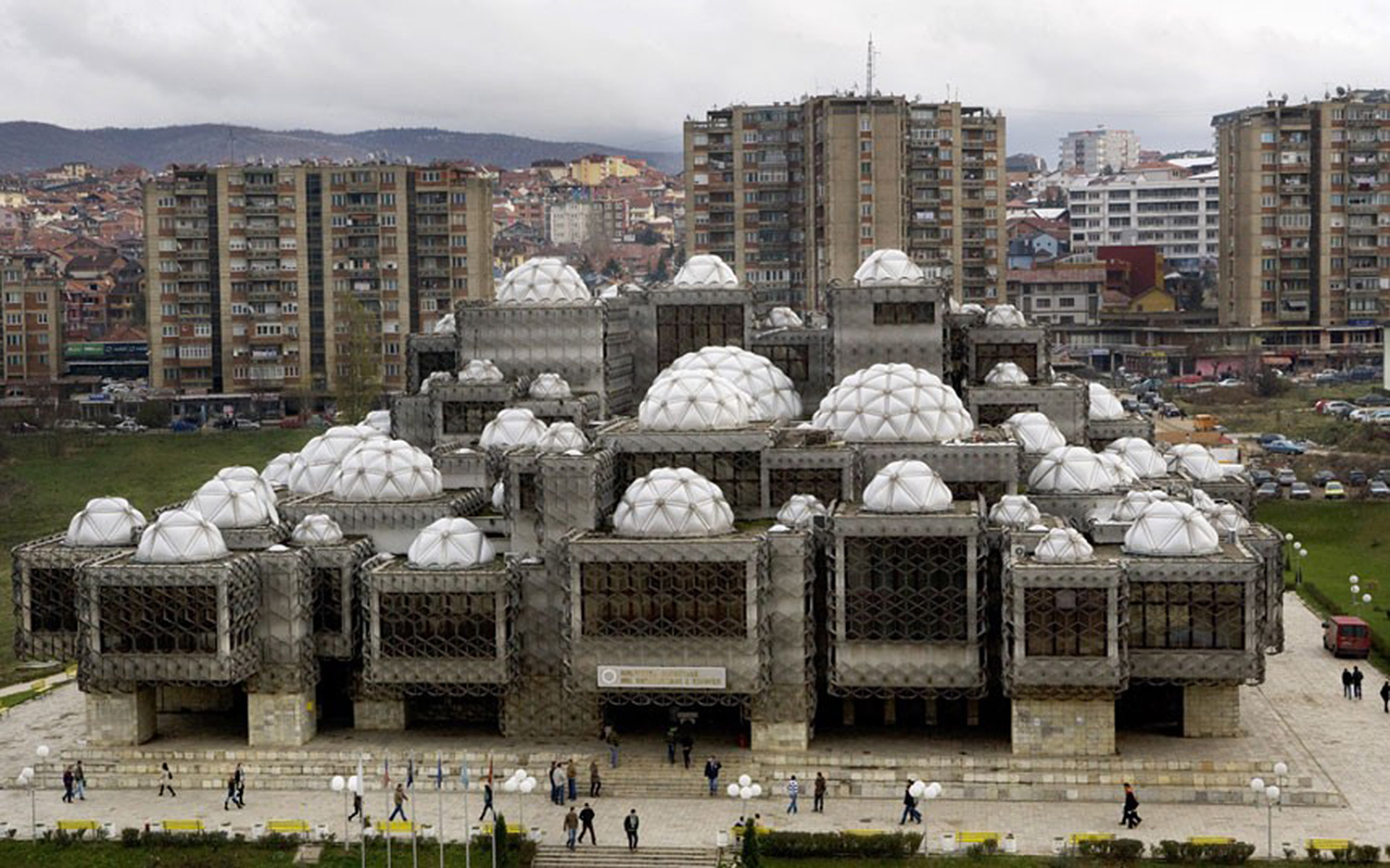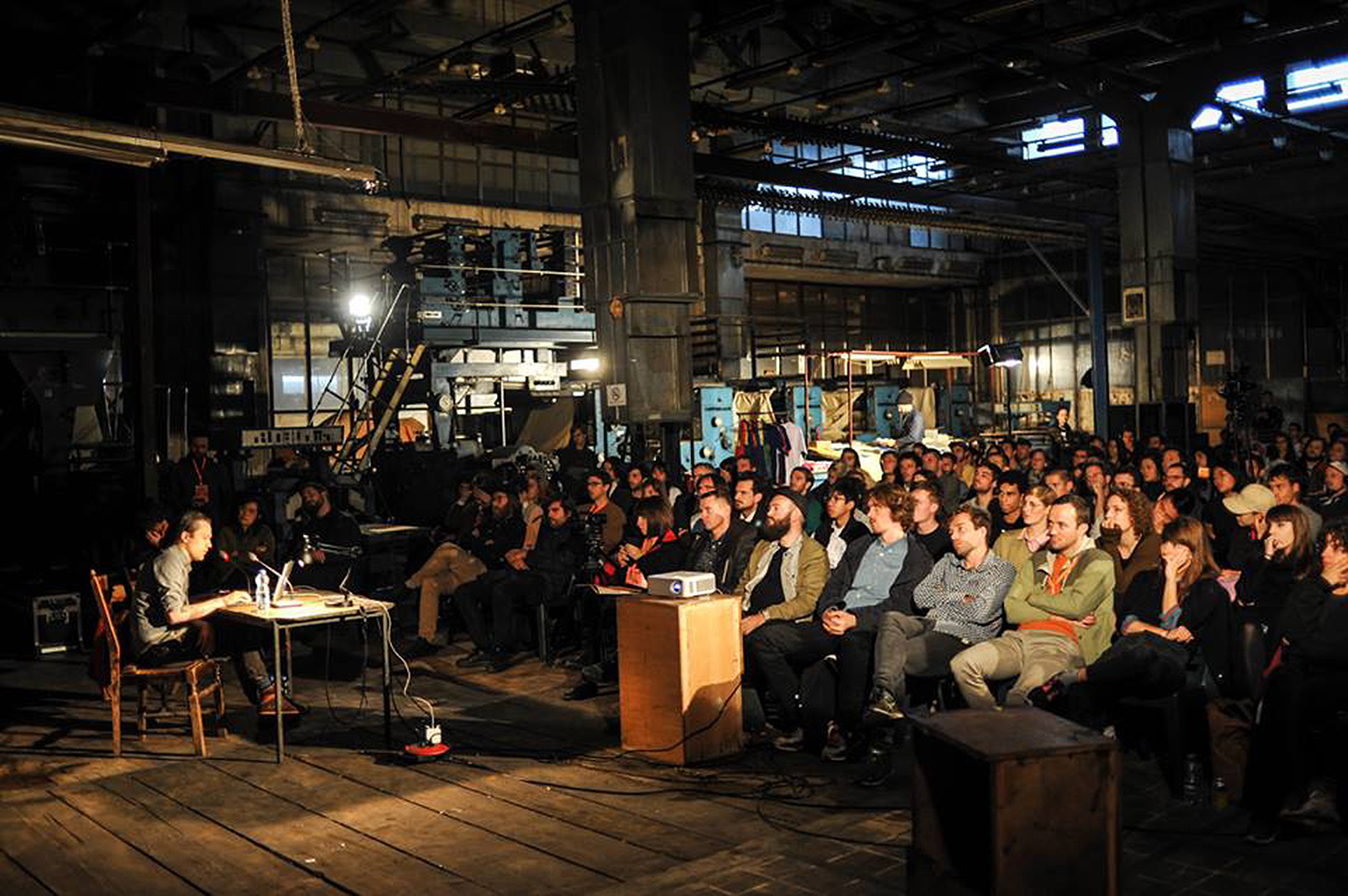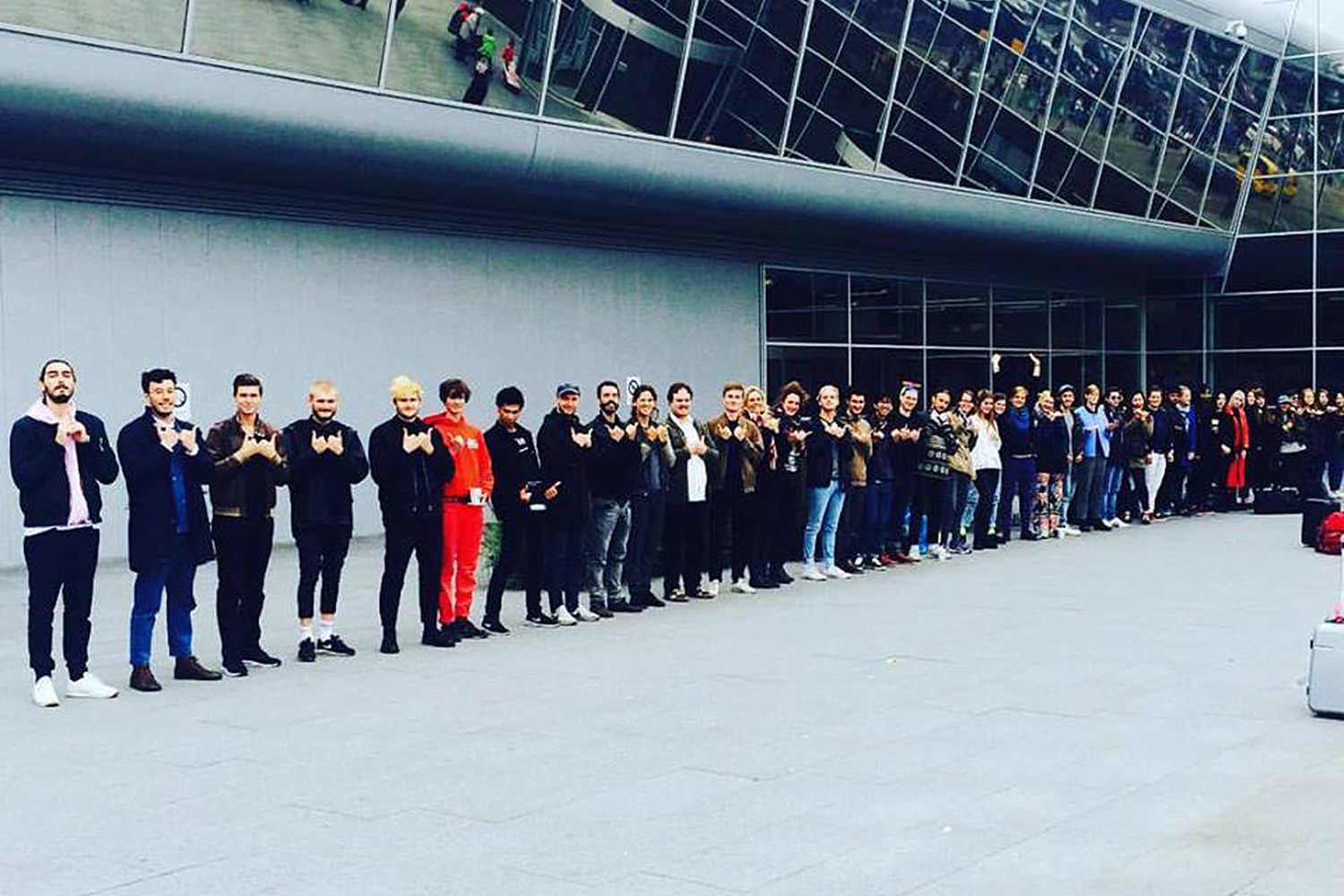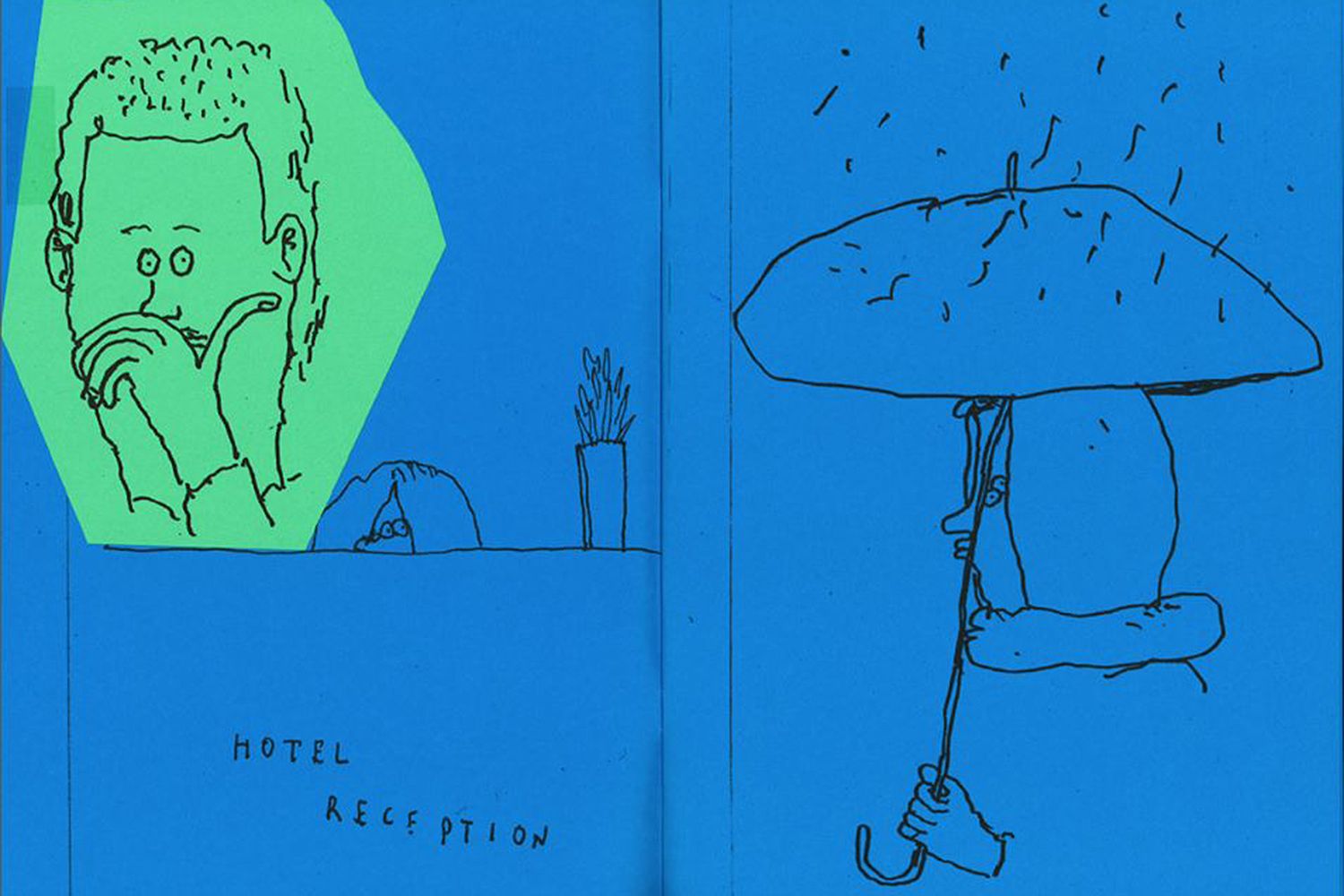REDO International Graphic Design Conference
To start, you are going to give a workshop at Self-School in Bratislava. What is the subject of your workshop?
I was invited a couple of months ago to SELF Festival to give a lecture as well as a one-day workshop. The curators have a very interesting approach to the festival; each year it takes a different form, and this year it will be a late summer school.
I came to hear about SELF through REDO. They contacted us last year a few months before REDO took place and told us that they would be traveling by bus from Bratislava to Pristina bringing the whole festival to our conference. So in a way their festival concept last year was traveling to REDO with Slovak designers, which we found quite interesting.
My workshop at the summer school will take the form of a guided tour through the city of Bratislava. Focused on the city’s architecture, the participants will approach and narrate their chosen sites/buildings through various mediums: stories, drawings, illustrations, photographs etc. My lecture will focus on the relation of architecture to politics, culture and music through the notion of repetition.
Why are you organizing REDO conference?
We organize the conference since 2011. Some of us had lived abroad for years before returning to Pristina and we saw REDO as a possible way of reconnecting with the city and finding out about each other and about who-was-doing-what. Besides that, all of us involved in the conference were and still are very critical towards the design education in the country and we saw REDO as an alternative to a poorly organized curriculum in the art academy. We are also intrigued by the idea of a city like Pristina and its promising potential in playing an interesting role internationally in the graphic design discourse.
Have you always been an organizer? Was the journey to becoming an organizer one that started early?
I have organized things here and there and still continue to do so, but not to the magnitude that is comparable with REDO.
I have organized things here and there and still continue to do so, but not to the magnitude that is comparable with REDO.
Prior to organizing the conference, there was a large group of us in Pristina meeting regularly over coffee and discussing, among other things, the possibility of starting a conference. Gradually, most of the people in the group could no longer attend these meetings due to their busy jobs. In those meetings I remember we always talked about the need to re-consider things/situations and possibly redo them. I think the name REDO was born in these circumstances.
To be honest we started disliking the name very much after the first year. We thought a lot about changing it, but after a while we figured the name doesn’t matter so much.
How do you curate the program?
We try to stay up to date and engaged with what other designers are doing. We are very keen on having our program include designers who lead their own independent practices as well as those who are involved in education. We find it interesting that graphic design is much harder to define now than say 20-30 years ago. We are fascinated by the fact that most interesting designers nowadays are not defined by what designers in the past decades were defined with i.e. logos, magazines, book covers etc. These days designers take on many different roles: authors, editors, musicians, curators, writers, political activists etc., and use graphic design as a tool to bring all these interests together. We are interested in the fact that the world is changing, the politics and political power is changing and that through immigration questions of identification are changing and how these changes transform design and its role in the world. We approach our program based on these developments.
Are there any side events during REDO?
Together with clubs/bars in Pristina we organize events every night after the lectures. We invite local djs or musicians to play music. It’s sometimes the case that the people we invite are also involved in making music or DJing as well. This happened in 2013 with Our Polite Society, Angry Youth and Ivan Sterzinger aka DJ CEO Müller. They were all involved in the conference after parties as DJs. As the lectures start in late afternoon, we organize tours through the city and leave enough time before the lectures so the guests can roam the city and meet people. If time permits, we also make a short trip to another city in Kosovo.
What is different this year?
As you might be aware, the conference takes place in multiple locations in the city of Pristina. We were quite interested in utilizing the city and making it part of the conference. In the first two years we had all the lectures in one location, and it worked fine, but we were interested in creating a conference on the move that would create a platform that would engage with the city, namely by having the city play a big role in how the conference evolves.
So far we have used the National Library of Kosovo, Faculty of Architecture at the University of Pristina, a Theater and a private University as venues. Last year we managed to get the space of a legendary state owned printer that had its heyday in the 70s and 80s. This is where all of our school books were printed and bound and where the national newspaper “Rilindja" was printed up until it went bankrupt in early 2000. So naturally this building and its history have a lot of impact on us as designers. Just like many state owned enterprises, this building is unfortunately in the privatization process and what will come out of it is undetermined. Whatever fate will come upon it, we know for sure it will no longer be a printing palace and we find that quite difficult to digest. For this reason, we found it fitting to use this space for our conference while we still can and activate it in a way that shows what it could have been and what it can still be. This year we are working on introducing more venues and matching the nature of the lectures with the context of the buildings where they are held.



It is interesting that you choose a building that connects in a way with the lecture. Are there tours in the buildings that you are using?
We always leave a bit of time before the lectures start for people to become familiar with the building. We don’t make an official tour of it, but we like the fact that it happens spontaneously. This especially happens with the National Library which has an interior that is just as incredible as the exterior. In 2014, Maki Suzuki from Åbäke had asked us about the possibility of him sleeping in the library one night prior to his lecture. Of course this was a nightmare to organise as you can imagine due to security issues, but we managed to do it somehow. His lecture was very much context specific, not only with the building but also with the city.
What are you most proud of or excited about if you look at this year’s program?
We are very excited and surprised by the fact that we are still able to organize it. It’s always a scary experience to be sincere, especially now that the audience is growing, but we are still standing strong. We are very much excited that again this year we managed to create a robust program that seems to draw people to the conference.
You are surprised by the fact that you are still able to organize REDO. Why is that, because of money or time?
It’s definitely a combination of both. We do this on a voluntary basis and it takes quite a lot of energy and time to organize. Unlike with some other countries where cultural events have a guaranteed budget for 3 to 5 years, funding for culture in Kosovo is very limited and difficult to obtain. This causes a lot of stress for us prior to the conference but we manage somehow.
What is the most memorable moment or unexpected surprise that can be linked to your event?
Sometimes unexpected things come out of REDO. Last year the international audience almost outnumbered the local one and that really surprised us. We are quite humbled and thrilled by the interest and the desire of schools all over Europe to come to REDO. This year we will be welcoming quite a big number of students from different schools abroad including: University of Kassel, Hochschule für Grafik und Buchkunst Leipzig, Hochschule für Künste Bremen, Rietveld Academie, École Nationale Supérieure des Beaux Arts de Lyon, Camberwell College of Arts in London etc.
Besides this, we feel quite flattered that often times the speakers from our conference stay in touch with the city of Pristina and with one another in different ways. Stefan Marx, one of the lecturers from 2013 made a zine about his experience in Pristina. Gregor Huber and Ivan Sterzinger made an issue of the newspaper Fabrikzeitung entirely devoted to the Kosovo diaspora living in Switzerland and had a launch of it at REDO last year. We have also been quite lucky to have Experimental Jetset, Åbäke, Cornel Windlin, Samuel Nyholm, Olivier Lebrun, Zgjim Elshani and others design t-shirts and bags as a contribution and promotion for the conference.



How does organizing a design festival influence your design practice?
We learn quite a bit from people we invite, either through their presentations or from one-to-one conversations. This makes us reflect on our own individual practices as well. We also hope that the lecturers also get something in return.
The organization of the festival is definitely shaped by the things that interest us and the way we approach them.
Lastly, what is the design scene like in Pristina?
This is always a troubling question. Certainly there is a small group of people who are doing interesting things but we never dare call it a scene. We are hopeful that REDO will play a role in further expanding and inspiring a new generation of young designers and students in Pristina.
REDO — International Graphic Design Conference
07 - 09 October, 2016
Prishtina, Kosova
Price: €10
redoconf.com








📬
Get the latest design conference news
in your inbox!
Join over 2,000 readers and receive a curated mix of upcoming events, inspirational talks, and links at the intersection of tech, design, and culture every Monday.